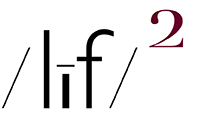I BELIEVE IT IS SAFE TO WRITE THAT AN overwhelming number of picture makers, aka: photographers, make pictures of things. That is, pictures in which the obvious, depicted referent-people, places, things, et al-is what their pictures are "about". And, more often than not, the referents are something that they care about, which is exactly what the conventional picture making advice / wisdom states one should do. You know, find something you are passionate about and make pictures thereof...like flowers? make pictures of flowers. Like puppies? Make pictures of puppies. Etc. etc. etc.
FYI, right from the get-go let me write that the above is most definitely not a criticism of that practice. That practice is what it is and people are having fun and enjoying thenselves in pursuit thereof. Many are also very fine practioners of the craft of making pictures. And, without a doubt, some of those crafty practioners are fully capable of making pictures which some would call art. I would put my name on the rank-and-file list of those who would label some crafty work as art. However...
...I would rarely label it as fine art.
My reason for that stance is really very simple. I, along with a host of others, believe that fine art is not about things but, rather, about an idea, or, if you will, a concept.
The dictionary defines of the word concept as "something conceived in the mind" and "an abstract or generic idea". And, to flesh it out a bit more, a synonym for the word concept is the word thought. From which I would suggest that a concept / idea is not a palpable thing. Rather, it is mental image of something seen or known or imagined, or to something assumed or vaguely sensed. In other words a concept / mental image is incapable of being felt by touch, aka: impalpable.
Therein is the challenge for the picture maker who strives / wishes to create fine art. That is, to make pictures that are about something that indicates, or at the very least, hints at something beyond that which is visually tangible.
That's a neat trick for those who can do so inasmuch as they are attempting to do so working with a medium and its apparatus which is intrinsically / inherently cojoined with the real, tangible world. It is kinda like trying to pictue a ghost. And....
.... that's not the only challenge. Assuming one is successful in conveying a concept to one degree or another, I would think that one would hope to find an audience who "gets it". That is, an audience which is capable of seeing what the picture maker sees. That is, capable of seeing beyond the obvious.
IMo, that is where the medium and its apparatus' unique characteristic (amongst the visual arts) of creating very accurate, detailed representations of the real, is, in a sense, its own worse enemy. That's cuz so many people out there are incapable of getting beyond the literal, visually obvious referent as seen in a photographic print.
You know what I mean. That is why most viewers think my kitchen sink pictures are about my kitchen sink.
